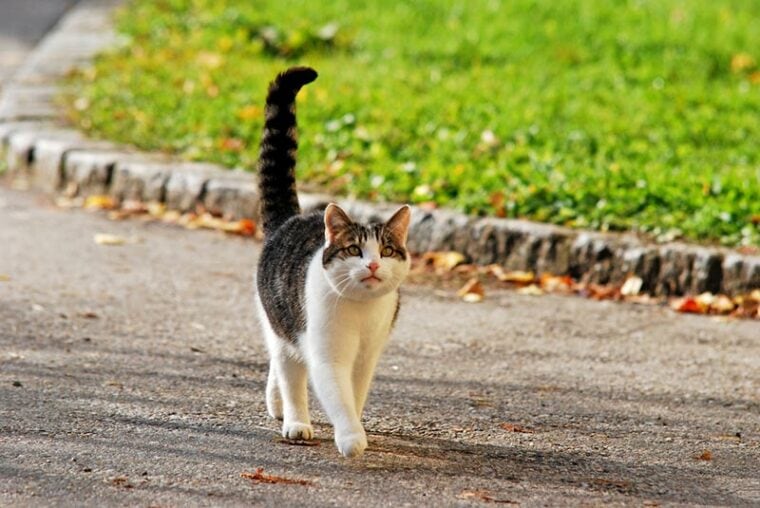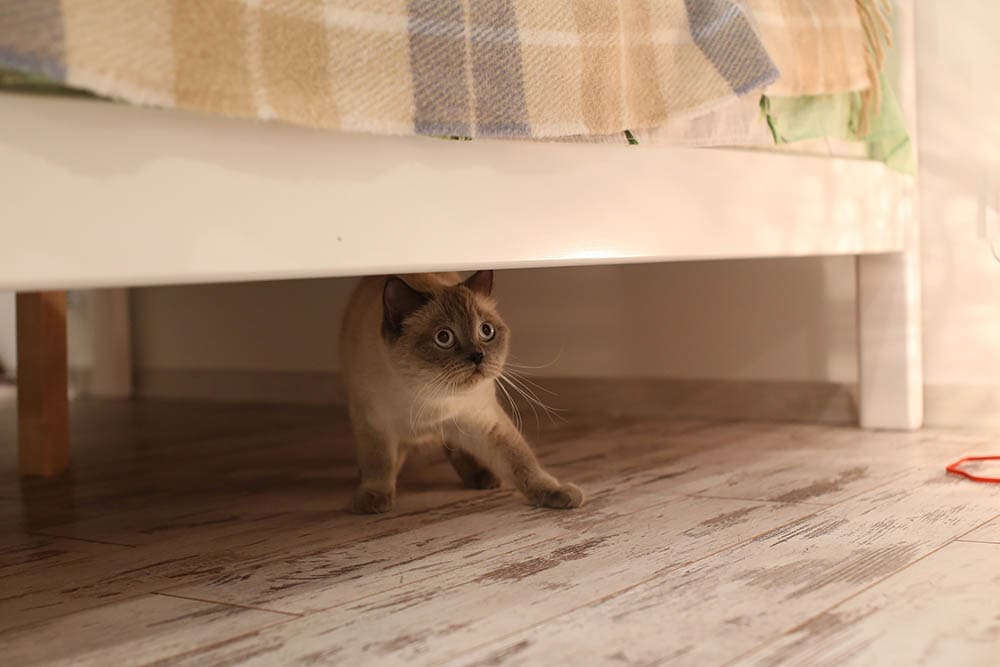
Cats may not be able to speak in the human sense of the word, but they have various ways that they can communicate their feelings with one another and to us. Their eyes, ears, and general body position can give away a lot about how a cat is feeling, while their tail is perhaps one of the most expressive parts of the body.
Twitching, swishing, or straight, your cat is using its tail to convey some emotion. It is important to remember that every cat is individual, and some breeds also carry their tails differently from others. But one of the surest signs of a cat’s mental state is when a cat puffs its tail up. So why do cats’ tails puff up when playing or otherwise?
Below are five reasons why your cat’s tail might be puffed up, but almost all of these reasons come down to the fact that a cat puffs its tail up to try and make itself look bigger.
Top 5 Reasons Why Cats’ Tails Puff Up:
1. Scared
Some cats, especially nervous and jumpy cats, are easily scared. If your cat gets a fright or is scared, it will puff up its tail in a bid to appear bigger. The bigger the cat looks, the more of a threat it appears to a would-be predator. Even if there are no predators in the area, if your cat is scared by a loud or unusual noise or a sudden movement, this is their natural response.

2. Aggressive
Like a scared cat, an aggressive cat puffs its tail up to look bigger. Rather than doing this as a defense mechanism, however, the aggressive cat is trying to look bigger and more intimidating as a warning. It may be a warning to another cat or other animal to back off, or it could mean that the cat is about to attack.
In this case, the puffed-up tail will usually be accompanied by hissing and by the cat’s ears being pressed back against its head. Even if this is meant as a warning, it can quickly go from warning to strike.
3. Playtime
When cats play, they essentially mimic their fighting actions. This doesn’t stop at the rolling, scratching, and biting that they would use in a catfight; it also covers body language.
Your cat might puff its tail up when play fighting because that’s what it would do in an aggressive fight. As a cat gets older, it may stop puffing up its tail when fighting, but some adult cats do continue with the habit. Look at the ears to determine whether your cat is playing or serious. If the ears are pointed straight up, it is more likely to be playing than being aggressive.

4. Submissive
Cats can be confusing and send out mixed messages, and this goes for the puffed-up tail, too. Some cats will puff up their tails as a sign of aggression. In these cases, the cat will usually lower its tail so that it is between its legs. It may lay down in a literal show of submission, too.
5. Defensive
In some instances, a cat may not be the aggressor but will still stand its ground. A defensive cat will puff its tail up to appear bigger and this may be enough to deter the aggressor and to de-escalate the situation.
How to Tell What a Cat’s Puffed-Up Tail Means
A puffed-up tail can have a lot of different meanings from submission to aggression and everything in between. The key to determining why a cat has puffed its tail up is to consider the context.
If you are in the middle of playing, or your cat is playing with another pet, a puffed-up tail is more likely to mean that it is happy and engaged in playtime. If a sudden noise or movement startled the cat, it probably puffed up its tail in alarm. If you’re approaching a cat in the street and it puffs its tail up, it is best to avoid it and give it space.
Conclusion
So why do cats puff their tails? Cats have a plethora of ways they can communicate their emotions and feelings without the need to use words. Look at the ears, eyes, and especially the tail. Consider context, too, because while the cat does have different body language signals, some of them have multiple meanings.
A puffed tail, for example, could mean your cat is angry or playful. The two are very different emotions, but the aim of the puffed-up tail is the same: to make the cat look bigger.
See also:
- Why Does My Cat Thump Their Tail? 7 Reasons & FAQs
- Why Do Cats Shake Their Tails? 9 Vet-Reviewed Reasons
Featured Image Credit: Alexandra Giese, Shutterstock







